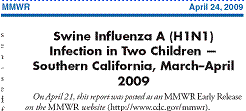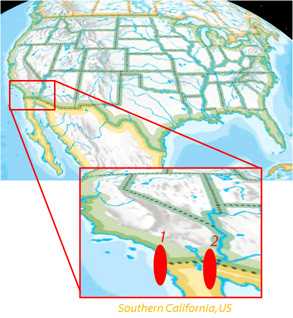Content on this page was developed during the 2009-2010 H1N1 pandemic and has not been updated.
- The H1N1 virus that caused that pandemic is now a regular human flu virus and continues to circulate seasonally worldwide.
- The English language content on this website is being archived for historic and reference purposes only.
- For current, updated information on seasonal flu, including information about H1N1, see the CDC Seasonal Flu website.
NOTE:This page is not intended as a stand-alone Web document and is intended to serve merely as a Section 508-accessible version of the PowerPoint presentation "2009 H1N1: Overview of a Pandemic, April 2009 - August 2010."
2009 H1N1: Overview of a Pandemic
Detection of the 2009 H1N1 Virus
- March 2009
- 2 cases of febrile respiratory illness in children (un-related, no pig contact)
- Residents of adjacent counties in southern California, ill in late March
- 2009 pandemic influenza A (H1N1) virus testing began at CDC on April 15th
- Both viruses genetically identical
- Contain a unique combination of gene segments previously not recognized among swine or human influenza viruses in the United States

Retrospective evidence of respiratory illness outbreaks in Mexico (February/March)
April 26, 2009
U.S. declares National Public Health Emergency
June 11, 2009
WHO declares Global pandemic of novel influenza A (H1N1) virus
Novel Swine Influenza Detected
- 1) April 15, 2009
- 10-year-old boy
- Mild flu symptoms
- Part of CDC study using “Mesoscale” flu test
- 2) April 17, 2009
- 8-year-old girl
- Mild flu symptoms
- Part of CDC Border Influenza Project
- Surveillance showed no other novel flu cases
- No suspect flu cases in hospitals in the region

Novel Swine Influenza Detected
- Both cases reported in MMWR - MMWR 58(15);400-02
- Posted gene sequences on GenBank
- Searched for swine exposure
- 10 year old visited San Diego zoo
- 8 year old at county fair
- No evidence to link to swine

Contestant at County Fair in California
June 11, 2009
"On the basis of available evidence, and these expert assessments of the evidence, the scientific criteria for an influenza pandemic have been met. I have therefore decided to raise the level of influenza pandemic alert from phase 5 to phase 6. The world is now at the start of the 2009 influenza pandemic."
- Dr Margaret Chan, Director-General of the World Health Organization

Surveillance Systems
- As the outbreak investigation expanded, CDC epidemiologists worked with state, local and international partners to enhance CDC’s existing flu surveillance systems to better track the spread of 2009 H1N1
Next: Impact of 2009 H1N1 >
Get email updates
To receive weekly email updates about this site, enter your email address:
Contact Us:
- Centers for Disease Control and Prevention
1600 Clifton Rd
Atlanta, GA 30333 - 800-CDC-INFO
(800-232-4636)
TTY: (888) 232-6348 - Contact CDC-INFO


